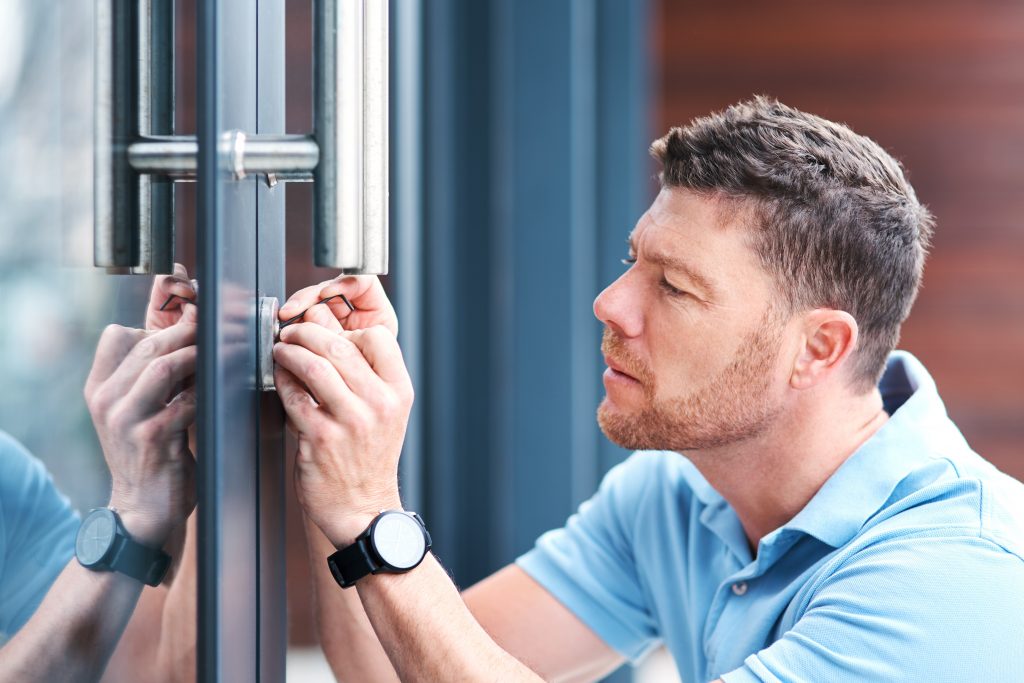Running a retail store with more than one entrance comes with unique security challenges. Every doorway is a potential access point for both customers and intruders, which means planning is essential. We deal with these concerns often and want to share clear, practical steps that make a real difference in protecting your business.
Understanding the Risks of Multiple Entrances
First, we should recognize that each entrance increases exposure. Side doors and delivery doors may not receive the same attention as the main entrance, yet they are just as vulnerable. Staff might focus on customer areas while forgetting rear exits that can be exploited. Our team has found that many incidents occur through secondary doors left unsecured or with weak locks. The goal is to treat every entry point with equal importance. When we identify these risks early, we can choose the right measures before problems arise.
Using Strong and Consistent Locking Systems
Second, we focus on hardware. Mixing different lock types across entrances creates confusion and uneven security. A consistent locking system provides control and reduces the chance of errors. For example, installing high quality deadbolts on every external door ensures that one weak spot does not compromise the entire store. Master key systems are also practical because they give managers access while limiting entry for other staff. If you ever want a professional assessment, a locksmith Calgary can review your hardware and recommend solutions that fit the needs of retail operations.
Monitoring Access During Business Hours
Third, we need to think about how entrances are used while the store is open. Customer doors must remain welcoming, but secondary doors can often be restricted. Many shops choose to keep side doors locked from the outside during the day, using them only for staff or deliveries. Door alarms add another layer by sounding if someone tries to exit through the wrong door. Surveillance cameras positioned at all entrances also discourage theft and provide records if issues occur. The more visible and consistent the monitoring, the fewer chances people have to exploit gaps.
Controlling Deliveries and Stock Movement
Next, deliveries are a common weak point. We know from experience that open delivery doors left unattended create quick opportunities for theft. The best practice is to schedule deliveries during less busy hours and assign a team member to supervise. Installing access control or keypad systems on delivery doors prevents casual entry. Rolling grilles or secondary barriers behind the main delivery door add another layer of protection without slowing down operations. These steps help balance efficiency with safety.
Emergency Exits and Legal Compliance
Another priority is emergency exits. Retailers cannot block or chain these doors because they must allow fast evacuation during a fire or other emergency. At the same time, emergency exits must not become easy access points for theft. Panic bars that allow exit but prevent outside entry are a strong solution. Routine checks confirm that the mechanisms work correctly and have not been tampered with. We have seen cases where emergency doors were quietly used by thieves, so regular staff training is just as important as the hardware.
Balancing Customer Experience with Security
Equally important is the customer experience. We cannot turn a store into a fortress without thinking about how people feel when they shop. Well lit entrances create a welcoming impression while also discouraging unwanted activity. Signs about video monitoring can reassure customers that the space is safe. Placing security mirrors in blind spots near side doors makes it easier for staff to keep an eye on those areas. By balancing accessibility with visible security, we create a space that feels safe without feeling closed off.
Training Staff to Manage Entrances
Finally, staff play a major role. Even with the best locks, poor habits can undo security. We recommend training every employee to lock doors properly at closing, check alarms, and report suspicious behavior near entrances. Having clear opening and closing checklists reduces mistakes. Assigning specific staff to monitor delivery doors ensures accountability. We have noticed that when employees understand why each measure is in place, they are more consistent in following procedures. Security works best when it becomes part of everyday routine.
When to Seek Professional Guidance
There are times when outside expertise is necessary. Complex retail layouts or older buildings may have hidden weaknesses that only show up under close inspection. In these cases, calling in professionals to conduct a full security review saves time and prevents costly mistakes. If you want to take that step, reach out through contact our locksmith team in Calgary and request an assessment. By walking the space with trained eyes, you can get practical recommendations tailored to your store.
Frequently Asked Questions
What is the best lock type for retail entrances?
Deadbolts with reinforced strike plates provide strong resistance. For busy doors, commercial grade lever locks are durable and reliable.
How often should we check emergency exits?
We suggest checking them weekly to confirm they function properly and have not been blocked or tampered with.
Should delivery doors stay unlocked during operating hours?
No, delivery doors should remain locked from the outside. Only open them when supervised and close them immediately after use.
Do security cameras really reduce theft?
Yes, visible cameras deter opportunistic theft and provide evidence if incidents happen. Placement at each entrance is particularly effective.
Can staff training improve store security?
Absolutely. Consistent training creates habits that prevent mistakes and ensure entrances remain secure at all times.

